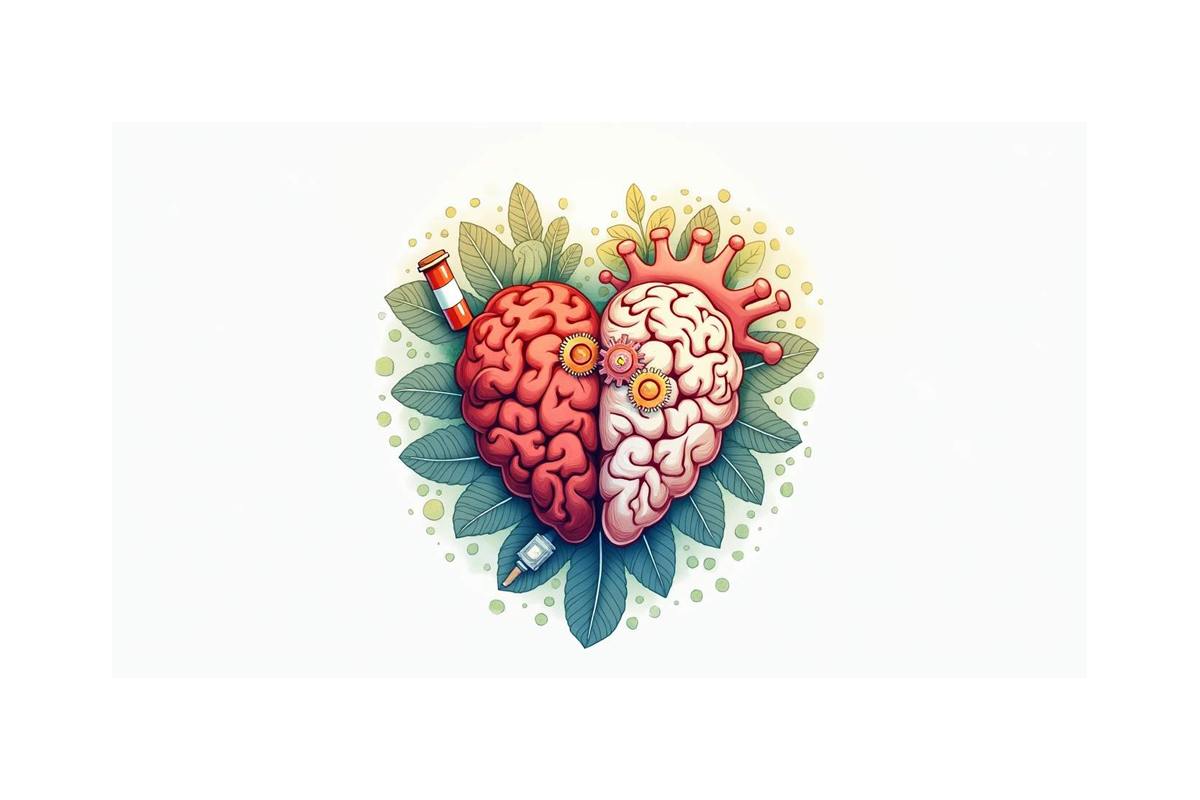In recent years, the conversation around mental health and substance use has gained significant momentum. However, one critical aspect that remains less understood by many is the concept of dual diagnosis — the simultaneous presence of a mental health disorder and a substance use disorder. Addressing these co-occurring conditions through integrated treatment is essential for effective recovery, yet many individuals still face fragmented care. This article explores why integrating mental health and substance use treatment is vital, the challenges involved, and the promising approaches that can lead to better outcomes.
Understanding Dual Diagnosis: What It Means and Why It Matters
Defining Dual Diagnosis
Dual diagnosis, also known as co-occurring disorders, refers to the condition where an individual experiences both a mental health disorder and a substance use disorder simultaneously. According to the National Institute on Drug Abuse (NIDA), approximately 9.5 million adults in the United States had co-occurring mental health and substance use disorders in 2020. These conditions often interact in complex ways, with one potentially exacerbating the other.
For instance, someone with untreated anxiety might turn to alcohol or drugs as a form of self-medication, which can lead to dependency. Conversely, prolonged substance use can trigger or worsen mental health symptoms such as depression or psychosis. Without addressing both issues concurrently, treatment is often less effective and relapse rates tend to be higher. For those seeking comprehensive care, luxury dual diagnosis treatment programs provide an environment where both disorders are treated simultaneously. These programs combine clinical expertise with personalized attention in a supportive, comfortable setting that promotes recovery.
The Prevalence and Impact of Co-Occurring Disorders
Research shows that individuals with dual diagnosis face greater challenges than those with a single diagnosis. The Substance Abuse and Mental Health Services Administration (SAMHSA) reports that nearly half of all people with a mental illness will also experience a substance use disorder at some point in their lives. This overlap significantly increases the risk of homelessness, incarceration, and suicide.
The economic and social costs are substantial. Untreated dual diagnosis can lead to frequent hospitalizations, increased emergency room visits, and a higher burden on healthcare systems. Moreover, the stigma surrounding both mental illness and addiction often discourages individuals from seeking help, perpetuating a cycle of suffering and isolation.
The Challenges of Treating Dual Diagnosis
Fragmented Care Systems
One of the primary obstacles in treating dual diagnosis is the separation of mental health and substance use treatment services. Traditionally, these services have operated independently, with mental health professionals focusing on psychiatric disorders and addiction specialists addressing substance use. This division can result in conflicting treatment plans, lack of communication among providers, and ultimately, suboptimal care for patients.
For example, a patient might receive medication for depression from a psychiatrist but fail to get adequate support for their alcohol dependency, or vice versa. Without a coordinated approach, the underlying issues remain unresolved, increasing the likelihood of relapse and worsening symptoms.
Diagnostic Complexities
Diagnosing dual diagnosis can be challenging because symptoms of mental illness and substance use often overlap or mask each other. Substance intoxication or withdrawal can mimic psychiatric disorders, making it difficult for clinicians to determine the root cause of symptoms. This diagnostic complexity requires thorough assessment and ongoing evaluation to ensure accurate diagnosis and appropriate treatment planning.
Stigma and Access to Care
Stigma remains a significant barrier for individuals with dual diagnosis. Many fear judgment from healthcare providers, family, and society, which can delay or prevent seeking treatment. Additionally, access to integrated care programs is limited in many regions, especially in rural or underserved areas. Insurance coverage and affordability also play a role in restricting access to comprehensive treatment options.
The Benefits of Integrated Treatment Approaches
What Is Integrated Treatment?
Integrated treatment refers to a coordinated approach that simultaneously addresses both mental health and substance use disorders within the same program or by the same clinical team. This model emphasizes collaboration among healthcare providers, personalized care plans, and the use of evidence-based therapies tailored to the individual’s unique needs.By treating both conditions together, integrated care aims to improve overall functioning, reduce relapse rates, and enhance quality of life.
This holistic approach recognizes the interconnectedness of mental health and addiction, rather than treating them as separate issues. For more on how care is structured across settings, one can check rehab programs like Legacy Healing Center’s treatment for substance abuse, which outlines inpatient, residential, partial hospitalization, intensive outpatient, and standard outpatient models. Effective integrated programs also provide a spectrum of care so individuals can move between levels as clinical needs change, from inpatient or residential to partial hospitalization and outpatient.
An important bridge between higher-intensity and outpatient levels of care is a medically supervised detox, which stabilizes patients and reduces the medical risks associated with acute withdrawal. Programs that combine clinical monitoring with supportive services—such as medication management, nutritional support, and early counseling—can make it easier for people to engage meaningfully in subsequent integrated treatment. For readers seeking concrete examples of how safe, whole-person detox is delivered in a residential setting, see detox centers in hawaii or similar, for program structure and transition planning. Highlighting this initial stage clarifies why coordinated detox often improves continuity of care and long-term outcomes.
Evidence Supporting Integrated Care
Studies consistently show that integrated treatment leads to better outcomes for individuals with dual diagnosis. According to a review published in the Journal of Substance Abuse Treatment, patients receiving integrated care demonstrated significant
improvements in psychiatric symptoms, substance use reduction, and social functioning compared to those receiving non-integrated care.Furthermore, integrated programs often incorporate a range of therapeutic modalities such as cognitive-behavioral therapy (CBT), motivational interviewing, medication-assisted treatment (MAT), and peer support. This multifaceted approach addresses the biological, psychological, and social aspects of recovery.
Examples of Successful Integrated Programs
Several treatment centers across the country have adopted integrated models with promising results. For example, the Hazelden Betty Ford Foundation offers comprehensive dual diagnosis programs that combine mental health counseling, addiction treatment, and family therapy. Patients receive coordinated care plans developed by multidisciplinary teams, which fosters continuity and consistency in treatment.
Similarly, community mental health centers and hospitals are increasingly implementing integrated care pathways, often supported by telehealth services to reach underserved populations. These programs demonstrate that with the right resources and commitment, integrated treatment can be accessible and effective.
Moving Forward: What Can Be Done to Improve Dual Diagnosis Treatment?
Policy and Funding Initiatives
Improving dual diagnosis treatment requires systemic changes at the policy level. Increased funding for integrated care programs, training for healthcare providers, and expansion of insurance coverage for co-occurring disorders are critical steps. Policymakers must recognize the importance of addressing mental health and substance use together to reduce overall healthcare costs and improve public health outcomes.
Education and Training for Providers
Healthcare professionals need specialized training to identify and treat dual diagnosis effectively. This includes understanding the complexities of co-occurring disorders, using screening tools, and applying integrated treatment protocols. Ongoing education can reduce stigma within the healthcare system and promote more compassionate, informed care.
Raising Awareness and Reducing Stigma
Public awareness campaigns can help destigmatize dual diagnosis by educating communities about the nature of co-occurring disorders and the benefits of integrated treatment. Encouraging open conversations and sharing success stories can empower individuals to seek help without fear of judgment.
Expanding Access to Integrated Care
Efforts to expand telehealth services, mobile clinics, and community-based programs can improve access to integrated treatment, especially in rural and underserved areas. Collaboration between mental health and addiction treatment providers can also facilitate smoother referrals and coordinated care.
Conclusion
Dual diagnosis represents a significant challenge in the realm of healthcare, but it also offers an opportunity to transform how mental health and substance use disorders are treated. Integrating these services is not just beneficial—it is essential for effective recovery and long-term well-being. By recognizing the complex interplay between mental health and addiction, investing in integrated treatment models, and addressing barriers such as stigma and access, society can make meaningful strides toward supporting individuals facing these co-occurring challenges.
Ultimately, integrated care offers hope and healing for millions of people navigating the difficult path of dual diagnosis, paving the way for healthier, more fulfilling lives.



